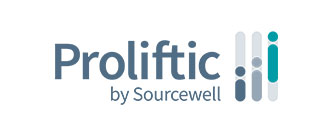Formative assessments
Teachers assign quizzes and tests as part of their normal curriculum. In fact, students partake in as many as two standardized tests per month and more than 70% of districts administer formative assessments. Educators input this formative data into their SIS to hold each student’s scores.
Educators often neglect to look at the formative data as a whole. Every piece of data a teacher collects paints a picture of how well students absorb the information given to them. It becomes difficult to compare individual progress to that of the group when you hold information in different silos.
Benchmarking
Teachers continue to demonstrate their ability to test their students and meet state standards. In order to truly gauge student and group performance, educators must look at benchmarks. Accurately benchmarking formative assessments can boost student performance between 20% and 40%.
Traditionally difficult to perform, benchmarking every student to that of the grade or district has become easier. An issue arises when teachers dig into the data and try to make sense of each student’s individual progress when comparing it to data collected coursewide. Proliftic can help. Our software aggregates student data from a variety of sources you already use and puts it in one place.
When educators benchmark formative data, they can better inform their instruction. Consistent benchmarking will shine light on students who fall behind. In this case, teachers will need to implement an intervention.
Interventions
When it comes time for a teacher to intervene, they need to implement the correct intervention tools. Each student learns in a different way. Selecting the correct intervention plan can feel like a blind guess.
Storing all your intervention programs in one place with notes on how to implement them should set you in the right direction. After monitoring student progress within a particular intervention program, you will quickly see if the student adequately absorbs the information.
The use of formative data can help an educator determine if they selected the correct intervention plan. Low scores suggest the intervention plan may not boost the student’s performance. Educators should take this formative data and allow it to drive instruction.
Student data insights platforms like Proliftic make driving instruction simple. Proliftic's effective delivery of research-supported interventions matches student need. Educators can also quickly access a bank of all of the interventions used in their district and can easily see the benchmarked programs with step-by-step directions to implement each. Educators can easily see the benchmarked progress of each intervention program in their district. Find which ones worked and which ones did not, giving you the confidence to implement the correct intervention program the first time.
It all boils down to the formative data you collect. This data, when appropriately benchmarked, can deliver keen insights into your instruction. Formative data can even help you select the correct intervention program when you have the right tools. Proliftic takes the guesswork out of formative data and instead delivers digestible insights. Interested in learning what Proliftic can do for your district? Request a demo today.

